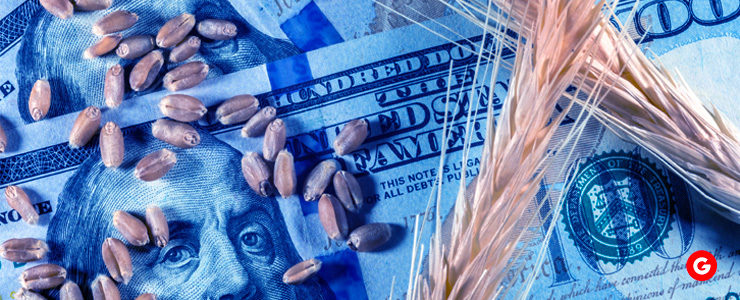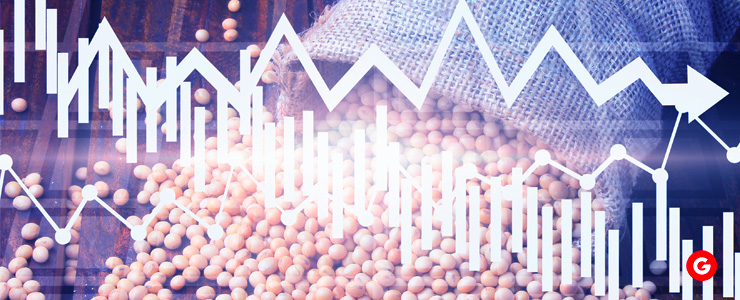Want to become an expert in trading agricultural commodities? Then it’s the right place for you.
This blog will teach you all the essential trading strategies for agricultural commodities.
The market of agricultural commodities is a hub that comprises buying and selling the produce, called trading in simple terms. Trading agricultural commodities like coffee, wheat, rice, etc, in global trade involves exchanging raw materials from agriculture. The trading strategies for agricultural commodities serve as centralized platforms where buyers and sellers come together to open the door for the trading of these vital goods. These commodities exchanges act as the strong pillars of the industry that promote transparency in trading and make it fair trade.
Several factors can influence the market of commodities, like supply and demand, storage, transportation, weather, natural disasters, etc., which can cause fluctuations in the market.

Read more to understand
Understanding Agricultural Commodities
Agricultural commodities are derived through farming and livestock, while some are extracted from the earth, like fuel, metals, etc. These commodities could be in raw or in processed form. The commodities are divided into two categories- soft and hard commodities.
Soft commodities include naturally cultivated raw materials and livestock like coffee, wheat, corn, live cattle, etc., whereas hard commodities include gold, coal, oil, and more, derived through extraction.
Soft commodities are the necessities for survival. Their availability and absence could lead to considerable problems in the trading market and our daily lives. Therefore, weather, supply and demand, and geopolitics are essential factors in agriculture commodities, as slight changes in any given factors can heavily influence the trading market. As an impact, there are maximum chances of an increase in the prices of the commodities.
In the case of geopolitics, the commodities are bought from a specific place where they are grown, as different types of crops need different environments to grow, and political relationships matter a lot. Supply and demand are correlated and depend on each other. If the demand for a particular product is low, given the good quality, consumers are more likely to buy it, ultimately increasing the supply. The same goes for the case of supply. More supply means more demand.
Fundamental Analysis for Agricultural Commodities
Before creating trading strategies for agricultural commodities, you need to do a fundamental analysis of agricultural commodities, including market reports, weather forecasts, etc. Let’s discuss the fundamental analysis for agricultural commodities in detail.
1. Supply Cycles: Supply cycles give information on goods’ production and price. Several soft commodities can not be grown throughout the years as they have a unique production cycle, which creates a problematic situation to balance both the demand and supply in the future.
2. Weather Forecast: The influence of weather on crop production plays a crucial role. You have to check the weather forecast to understand which weather is suitable for more production of commodities like coffee, wheat, rice, etc.
3. Government Policies: Government policies are strict in the agricultural commodity market. Policies by the government tend to change over time, making one crop more profitable than another in terms of price and easy availability.
4. Harvest Data: The harvest data reports are detailed and produced by the government and provide information on the supply of agricultural products. It also provides a progress report of crops that gives a wide assessment of crops’ growth and whether yields are predicted to be lower or higher.
Technical Analysis and Trading Strategies
Online trading strategies for agricultural commodities will give you maximum profit as they come with technical indicators and show chart patterns. Some indicators and charts are discussed below:
1. Momentum Indicators: Momentum indicators are best for online trading in commodities. They make you focus on buying at a low price and selling at a high price. They are further divided into oscillator indicators and trend-following indicators.
2. Moving Averages: Moving averages are widely used indicators. These indicators provide information on the average price for a specific period of a particular commodity.
3. Relative Strength Index: The Relative Strength Index can be beneficial when complementary to the other indicators and is mainly used to find divergence.
To become an expert in commodity trading, you must learn about agricultural commodities’ trading strategies. Below are the strategies:
1. Commodity Risk Management: With the help of stop-loss orders, investors can limit their losses. Also, you can eliminate risk by speculating on the future prices of commodities and understanding index comparison charts.
2. Diversification in Agricultural Commodities: The producer rotates the production to manage the price risk. You must ensure that while embracing diversification, the other commodities are not the price risk.
CFD trading is the preferable and most accessible way, as there is no need to own the products physically. Online trading platforms like MetaTrader 4 (MT4) are highly efficient for commodity trading. You can trade various commodities using FXGiants, the best MT4 trading platform in the forex market.
The Impact of Global Events
We have been fighting COVID-19 and have seen the ongoing war between Ukraine and Russia. Deadly situations like pandemics and wars have a drastic impact on commodities on a global scale. These situations call for economic shifts.
As a result, the prices of agricultural commodities rise. Also, the supply and demand suffer a lot and create tension in commodity markets.
The strategies mentioned above will be beneficial to deal with these sudden changes in the commodity markets. However, you must be well aware of trading in the commodity market by learning the market trends and becoming flexible to changes without facing huge losses.

Sustainable and Ethical Considerations
Digital trading of commodities has proven effects of sustainability in agricultural practices. The balance between the production and consumption of commodities is maintained through online trading, which is a key factor in using them and contributes towards the environment by maintaining that balance.
In this digital era, trading ethically with honesty is very important. However, some investors use unethical ways of trading by manipulating the price of the commodities. Hence, it is vital to follow ethical practices in trading and maintain transparency for a fair trade. Strict rules on trading strategies for agricultural commodities by the government also play a massive role in this.
Conclusion
Trading strategies for agricultural commodities like wheat, rice, and corn are perishable and have a short shelf life. Online trading balances production and consumption efficiently, saving commodities from rotting.
Following the strategies of trading for agricultural commodities will help everyone to gain profits adhering to ethical practices. Staying informed and adaptable in this market will improve you. Try your hands on FXGiants now for a great experience.
DISCLAIMER: This information is not considered investment advice or an investment recommendation, but is instead a marketing communication
